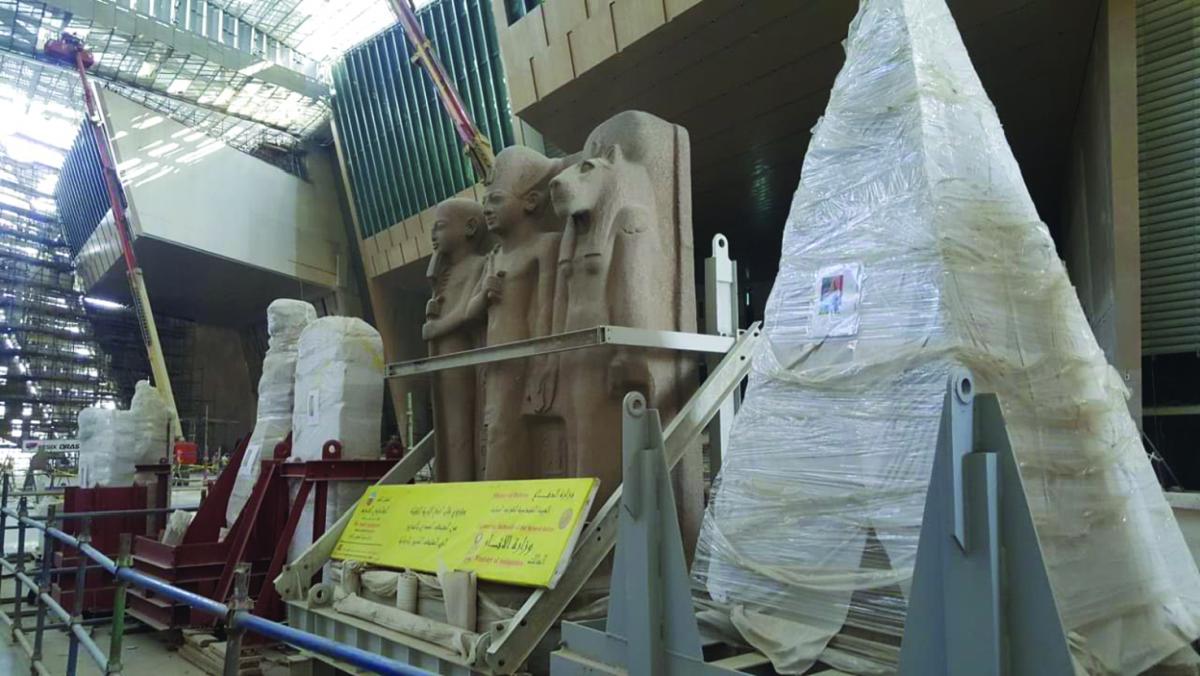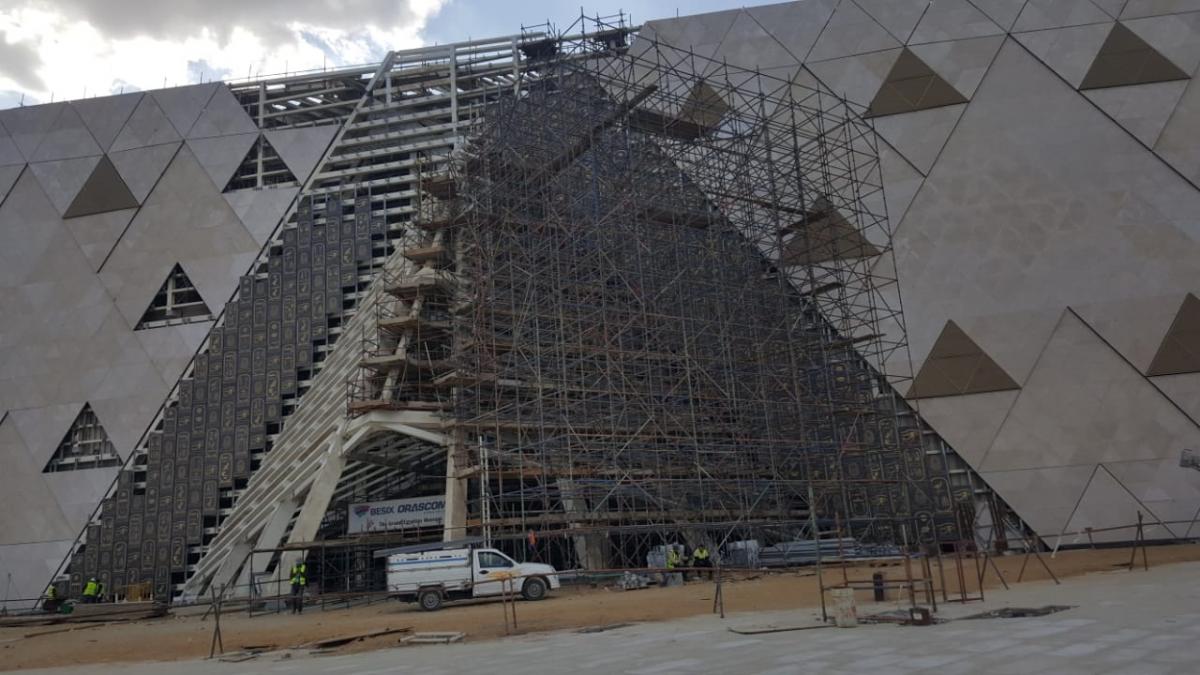* The museum will feature a seven-thousand-meter long section which, for the first time in history, will showcase all of King Tutankhamun’s treasures.
*The Archeology Restoration Center in the Grand Egyptian Museum has restored 46 thousand artifacts.
In a few short months, Egypt’s Ministry of Tourism will have put the final touches to the Grand Egyptian Museum which is slated to be open to the public by the final quarter of 2020. The museum, which the ministry says is at 95 percent completion, will display no less than 50 thousand antiquities by the time of its grand opening. The museum will feature a seven-thousand-meter long chamber which, for the first time in history, will showcase all of King Tutankhamun’s treasures.
The museum’s opening ceremony is set to be one of the biggest events in the Middle East, the fact that it will be the world’s largest museum, both in terms of size and number of items, means that the opening ceremony might even prove to be one of biggest events in the world. As the grand scale of the museum reflects the grandiosity of Egyptian culture, the Egyptian Prime Minister wanted the opening ceremony to replicate such magnificence. As such, the opening ceremony will be 12 days long and there are studies currently being conducted on which companies should participate in the event, and which ones would yield the highest returns to the event. Furthermore, a myriad of international institutions is set to sponsor the event.
The main entrance will feature a square where the world’s first hanging obelisk will be displayed. This hanging obelisk is not an ancient artifact, but rather a modern art piece that replicates ancient Egyptian artwork and architecture. According to Dr. El Tayeb Abbas, the General Director of Archeology at the Grand Egyptian Museum, this marks the first time that Egyptian artists and sculptors attempted to accurately imitate the intricate art styles of the ancient Egyptians. Dr. Abbas also confirmed that the process of transporting artifacts to the museum from various sites and other museums is still ongoing in order to accelerate the completion of the exhibitions.
The General Director also said that many of the pieces on display at the Egyptian Museum in the Downtown Cairo area of Tahrir Square, will be transported to the Grand Museum and, as a matter of fact, 50,000 ancient pieces from Tahrir Square have already made the Grand Museum their new home. Additionally, the museum will display Ramses II’s statue which stands at 11 meters tall and is 3200 years old.
Dr. Abbas was optimistic that the Egyptian tourism industry would surge this year, as an estimated 15 million tourists are expected to visit this year. The last time Egypt saw such numbers was in 2010, the year preceding the Arab Spring which destabilized many countries and industries in the region. Such great news comes as many cultural institutes around the world named Cairo as one of the top ten cities to visit this year. Factors such as the opening of the Grand Museum and plans to start building the Sphinx Airport near the Giza Pyramids have made Egypt such a hot tourist destination.

Furthermore, two months from now all sections of the museum will start being showcased, according to Dr. Abbas. Even the major sections, such as the chamber dedicated to Tutankhamun’s treasures will be part of the showcase. To put into perspective how massive the King Tut section is, Dr. Abbas said that 105 vitrines will be used to store and display the Golden Pharaoh’s treasures.
Egyptian archeologist Zahi Hawass said that the completion of the Grand Egyptian Museum was an extraordinary accomplishment and that it would serve as President Abdel Fatah El Sisi’s gift to the world. At his side was Dr. Eissa Zidan, the Director-General of Executive Affairs for Restoration and Transportation of Antiquities of the Grand Egyptian Museum, who said that the Archeology Restoration Center in the Grand Egyptian Museum has restored 46 thousand artifacts. Additionally, 50 thousand pieces of King Tut’s treasures have arrived at the Archeology Restoration Center as restoration work is done on a weekly basis as to keep up with the established restoration timetable. This also ensures that the pieces will be on display during the preliminary showcase.

The museum’s exterior will have slabs that will have names of the Pharaohs written on them, resembling the cartouches that ancient Egyptians used to display the names of their kings. The cartouches will be hung at the main entrance of the museum and will display the names of the twenty-five dynasties that ruled over Egypt during the Old Kingdom. The family members making up the fourth dynasty will also be included as there will be cartouches for Khufu, Khafre Menkaure and Snefru.
There will also be cartouches bearing the names of the kings that ruled during the 12th dynasty of the Middle Kingdom, as such there will be cartouches for King Senusret, and King Amenemhat. The kings of the New Kingdom will also be commemorated in the museum’s interior, which will have cartouches for King Ahmose, King Amenhotep II, King Akhenaton, King Tutankhamen, and King Rameses II. As a result, these cartouches would turn the museum into a hall of fame for the Pharaohs who reigned over Egypt during its rich ancient history.









